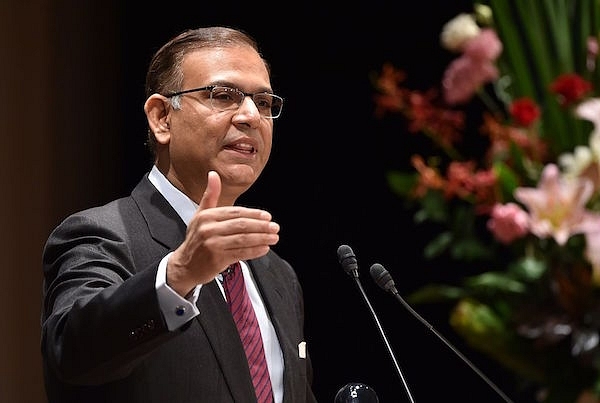Insta
Sinha Vs Sinha: Seven Structural Reforms And Initiatives That Yashwant Sinha Did Not Take Into Account

Jayant Sinha. Photo Credit: KAZUHIRO NOGI/AFP/GettyImages
In response to his father’s article in the Indian Express, which predicted a hard landing for the government, Minister of State for Civil Aviation Jayant Sinha has said that commentators are drawing “sweeping conclusions” from a narrow set of facts, without taking into account the fundamental structural reforms that are transforming the country’s economy.
Writing in the Times of India, Sinha pointed out seven major structural reforms and initiatives that commentators, including his father, have not taken into account while analysing the current state of the Indian economy.
The reforms and other efforts that Sinha points to include Goods and Services Tax (GST), demonetisation, digital payments, new Foreign Direct Investment (FDI) regime, Jan Dhan-Aadhaar-Mobile (JAM) trinity and Bankruptcy Code.
According to Sinha, one or two quarters of GDP growth and other macro data are inadequate to evaluate the long-term impact of the structural reforms underway.
Sinha writes that reforms such as GST and push for digital payments will bring the informal sectors of the economy are now being brought into the formal sector and in the tax net. “In the long term, formalisation will mean (a) tax collections go up and more resources are available to the state; (b) friction in the economy is reduced and GDP goes up, and (c) citizens are able to establish credit more effectively as transaction records are digitised,” he has stated.
A streamlined FDI regime and dismantling of Foreign Investment Promotion Board, he says, is helping make the economy even more open. “FDI has accelerated from $36 billion in FY2014 to $60 billion in FY2017,” he mentions.
The Jan Dhan-Aadhaar-Mobile (JAM) trinity, he points out, has helped the government reduce leakages through schemes such as Direct Benefit Transfer. “Rs 1.75 lakh crore of benefits have been transferred directly to beneficiaries over the last three years. JAM is weeding out many ghost and fake beneficiaries,” he says.
Talking about the Bankruptcy Code, he says policy-making across ministries has become thoroughly rules-based. “The code will enable speedy resolution of stressed assets providing relief to NPAs in the banking sector,” he writes.
He also points out to other initiatives taken by the government, including Atal Innovation Mission, rural electrification mission and infrastructure push.
Support Swarajya's 50 Ground Reports Project & Sponsor A Story
Every general election Swarajya does a 50 ground reports project.
Aimed only at serious readers and those who appreciate the nuances of political undercurrents, the project provides a sense of India's electoral landscape. As you know, these reports are produced after considerable investment of travel, time and effort on the ground.
This time too we've kicked off the project in style and have covered over 30 constituencies already. If you're someone who appreciates such work and have enjoyed our coverage please consider sponsoring a ground report for just Rs 2999 to Rs 19,999 - it goes a long way in helping us produce more quality reportage.
You can also back this project by becoming a subscriber for as little as Rs 999 - so do click on this links and choose a plan that suits you and back us.
Click below to contribute.
Latest